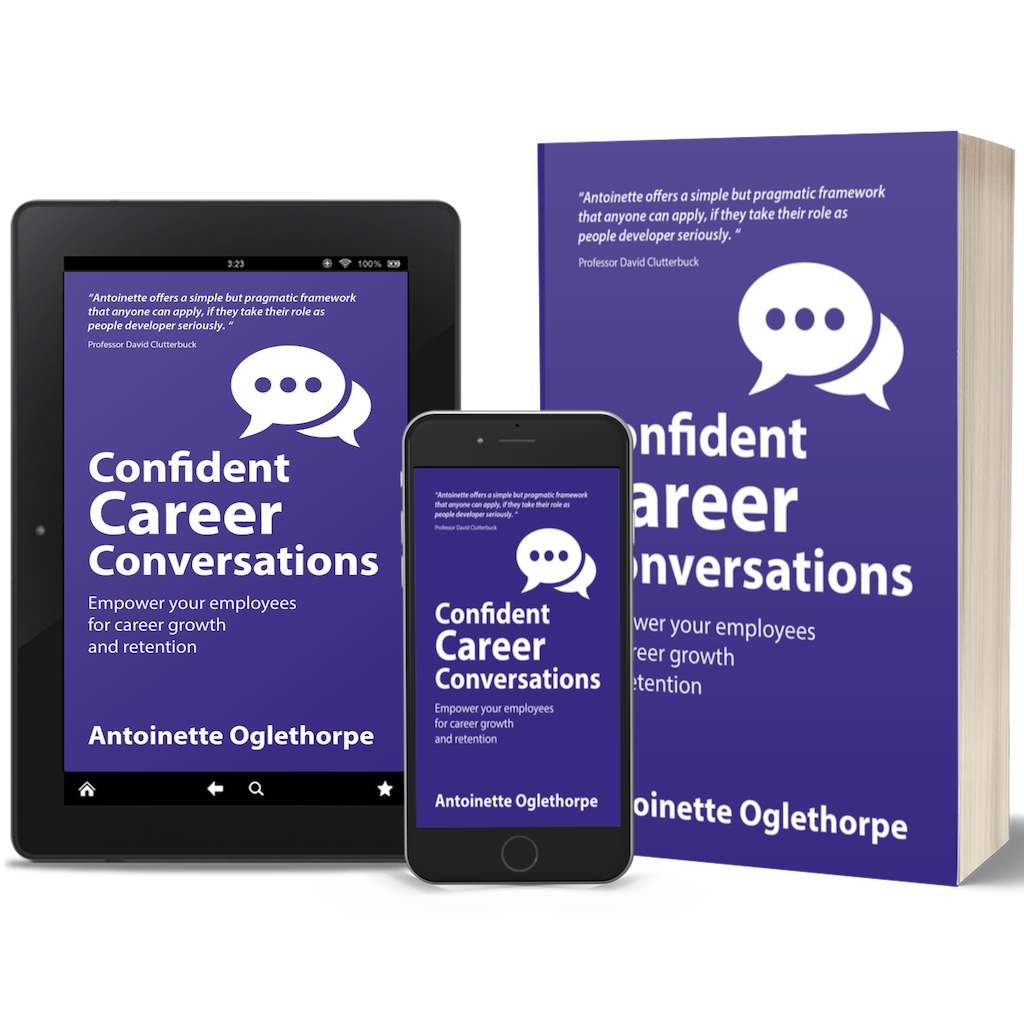If you read this blog regularly you will know by now that it’s important to have career conversations with employees if you want to keep and develop your best people. You will know that the most valuable questions are well-crafted solution-focused ones that provoke insight and reflection. You may even have purchased your own Career Conversation Toolkit to save you the heavy lifting of crafting those questions. But you may still be wondering how to have a career conversation that engages employees and empowers them to take action.
Don’t worry, help is at hand. Just read on.
How to Have a Career Conversation
There are 5 stages of a great career conversation:
1. Set up the conversation
Manage expectation by emphasising the individual is responsible for managing their career. You are someone who can help them manage this better.
Take time to prepare. If you don’t know the individual, see if they are happy to send you their CV. Tell them in advance if there are questions you would like them to think about. Emphasise that the conversation is confidential.
2. Establish trust
Agree the desired outcomes from the conversation.
Establish an open feel to the conversation. Put the other person at their ease. Show your interest, listen carefully, check you understand what they say to you.
Be open about your own career and experience if appropriate.
3. Explore the situation
Use powerful questions to facilitate their thinking.
Help the individual discuss what they really want out of work. If you sense the individual needs to explore more personal concerns, give them the opportunity to do so, but respect their right to keep these matters private.
Help the individual to identify a wide range of ways forward. Which do they feel would suit them best? Are their preferred options realistic?
4. Share information
Try to meet the individual’s needs for information, including opportunities outside the organisation. Where appropriate suggest other people they should talk to.
Use your own and others’ careers to illustrate options. But don’t expect the individual to want a career like yours.
5. Agree actions
Leave enough time to bring the discussion to a close and agree what happens next. Ensure the individual knows they can come back to you.
Does the individual need you to take any actions (e.g. help them make initial contact with others)? If you agree to do something, do it – and quickly.
if you would like to find out more about how to have a great career conversation why not download our free ebook It’s Good to Talk! A Practical Guide to Career Conversations in the Workplace.



